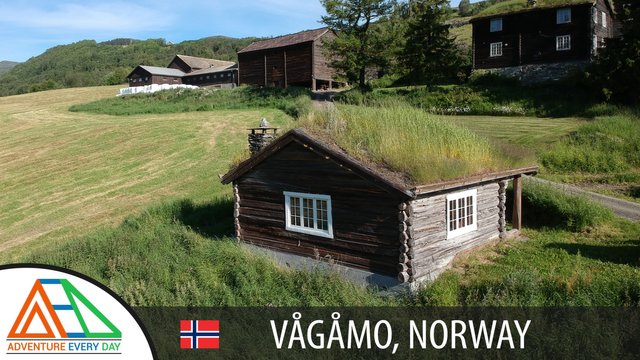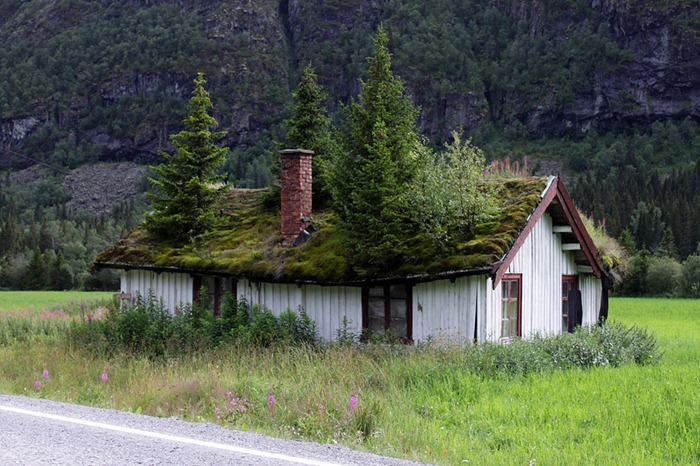Read this post on TravelFeed.io for the best experience
If you spend some time driving around Norway, you will undoubtedly find plenty of cabins that are quite "alive". Some might even have trees protruding from the roof. On the first night of our road trip, we had the pleasure of staying at such a green roof cabin.

Following our tour of Lillehammer and the Ringebu stavkirke, we continued onward until we arrived at home for the night, which turned out to be a quaint cabin on a countryside farm with a delightful view over Vågåvatnet (Vågå lake) in the Ottadalen (Otta valley).
It was a rather late arrival, yet still being in the middle of the summer meant that it wasn't completely dark even after midnight. Gotta love Norway in the summertime!
The farm seemed still upon visual inspection, but the sound of bleating in the distance and the scent in the air told us that we weren't alone but were sharing the grounds with a herd of sheep.
We were quite pleased to find that the cabin was built with a traditional Norwegian technique with a living roof that had several types of grasses growing from it. I'd always wanted to stay in one of these!
Grass roof cabins are quite a common sight as you travel around Norway. In fact, although I haven't seen much of it myself, you can find pictures online of cabins with shrubbery and even whole trees growing out of the roof or goats grazing on the grass. Something to look out for on your Norway trip!
The one we were staying in was simple, but perfect. It was one large room, with beds in two of the corners, a kitchen in the third and a fireplace and living area in the final one. The center space was filled with a dining table, and the bathroom was in a separate but attached structure coming off the porch. This meant having to go outside on the porch in order to access the bathroom, but that's how cabin life is supposed to be!
Living roof construction
Norwegian torvtak or turf roof construction dates back centuries, even more than a thousand years ago in the Age of the Vikings.
Their existence was threatened by tile building techniques in the 18th century, but the practice survived in remote areas and eventually was revived for cultural reasons, so the tradition carries on today.
The typical construction technique is with birch bark laid over the roof beams. This creates a solid, water-tight bottom layer, upon which the sod is laid down. The primary function of the sod is actually to keep the birch bark in place.
There are a few reasons for sod roofs. As you can imagine, especially with how much it can rain here, these roofs can become quite heavy. However, that is actually one of the objectives - the heavy weight helps to stabilize the logs of the cabin and compress any gaps between them.
They are also long-lasting roofs with an expected lifespan of at least 30 years, which provide good insulation and prevent much heat from escaping through the roof. An important characterisitc given the extreme conditions the winter can bring here!
The grand tour
Okay, now that we've learned some history of these buildings, let's take a tour, shall we?
It was sad to say goodbye to this cabin, but before we knew it, a roadside pitstop would turn into a highlight of the trip. That's for my next post!

View this post on TravelFeed for the best experience.

Congratulations @adventureevryday! You received a sweet smile from TravelFeed. We love your work so keep up the good job. 😊
Feedback
We have 1 tips for you on how you can improve your post to receive more smiles for your future posts. To view the feedback, head to your TravelFeed Dashboard. Next to your post you will find a smiley, a click on it reveals the detailed feedback.
Thanks for using TravelFeed!
@elsaenroute (TravelFeed team)
PS: You can now search for your travels on-the-go with our Android App. Download it on Google Play
Downvoting a post can decrease pending rewards and make it less visible. Common reasons:
Submit